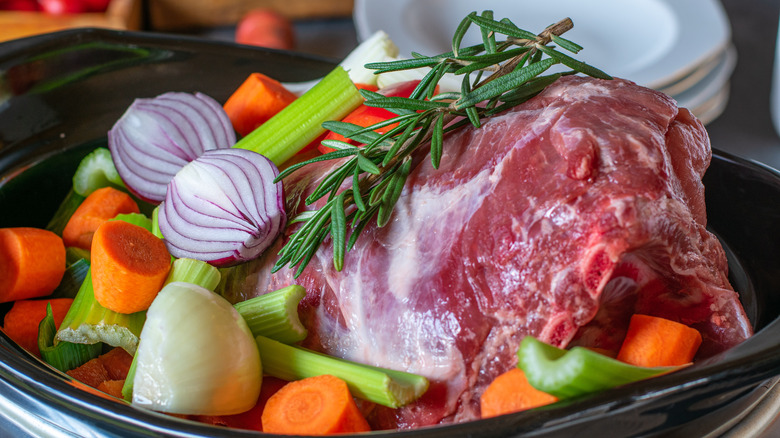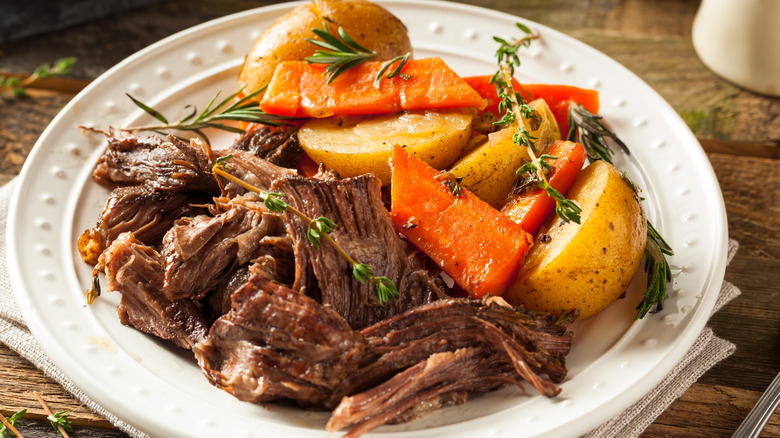Why You Need To Cook 7-Bone Roast Low And Slow
There are plenty of comforting meals that give our stomachs that warm, cozy, satisfied feeling akin to dozing in front of a fire on a cold winter's night. Macaroni and cheese, chicken pot pie, spaghetti and meatballs, all fall under the umbrella of comfort food, per Food52. Yet, there are few meals more cozy and satisfying than a good pot roast. Whether you're cooking for a crowd on a Sunday, or setting the crockpot going before work, the smell of slowly cooked meat combined with broth and root vegetables is enough to make anyone smile.
Naturally, the best cuts of beef for a pot roast are going to be the cheaper ones. The ones that are tougher and less attractive than your average sirloin steak. These cheaper cuts lend themselves well to low and slow cooking methods, like braising and roasting, because the meat has time to tenderize and moisten, per MasterClass.
The chuck roast, derived from the shoulder area of the cow, is perhaps the best and most common cut for this type of cooking. You can find chuck roasts both with or without bones. The bone-in version of the chuck roast is sometimes called the 7-bone roast. The name is owed to the numerical shape the bones take having been cut from the cross-section of the shoulder blade, per Beef-2-Live. So rest easy in knowing that you don't have 7 bones to contend with when it comes time to cook this roast.
The low and slow of it
If you tried to cook a 7-bone roast dry, the way you would steak, you would find yourself with a tough, rubbery mess. The reason for this is that the 7-bone chuck roast is loaded with sinews, or gristle, which is composed of collagen and connective tissue. Over high direct heat, these tissues will tighten, causing the meat to tighten and toughen as well. This is why roasting or braising your 7-bone roast is going to yield the best results (via The Spruce Eats).
Scientifically speaking, collagen and connective tissue are the roast's greatest assets. According to Rib 'n Reef, when exposed to consistent, low heat over a long period, the collagen holding the connective tissue together will liquefy and leach out of the meat and into the cooking liquid. This not only flavors the broth further, thereby adding layers of flavor to the stewing vegetables, but causes the meat to become extremely tender. This is the result you're looking for in a pot roast.
When it comes to flavor, the 7-bone roast is no slouch. The chuck is known for its rich, beefy flavor, per Beef It's What's For Dinner. The bones also go a long way toward added flavor and tenderness. According to America's Test Kitchen, the marrow, collagen, and fats of the bones will dissolve into the cooking liquid, thereby adding more flavor to your overall dish, if not necessarily to the meat itself.

